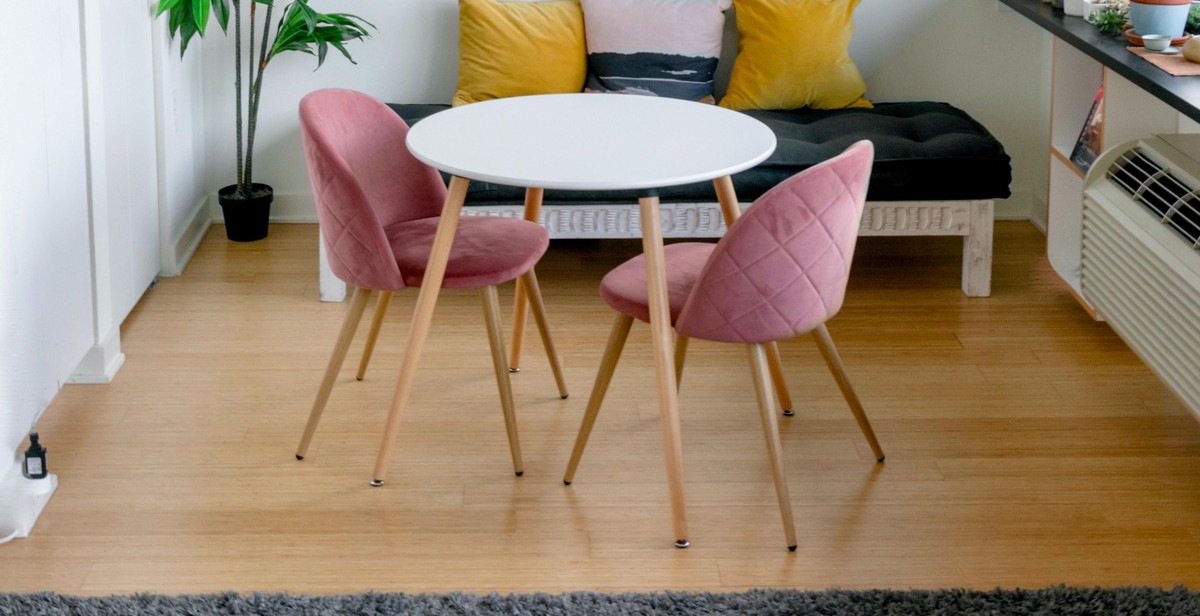How to Design a Functional and Stylish Home Theater
Having a home theater is a dream come true for many homeowners. It is a place where you can relax, unwind, and enjoy your favorite movies or TV shows with your family and friends. A home theater is not just a luxury, but it is also a necessity, especially now that most people spend a considerable amount of time at home due to the pandemic.
Why You Need a Home Theater
A home theater offers several benefits, including:
- Convenience: With a home theater, you can watch your favorite movies or TV shows at any time without having to leave your house. You can also pause, rewind, or fast-forward the content at your convenience.
- Cost Savings: Going to the movies can be expensive, especially if you have a large family. With a home theater, you can save money in the long run by avoiding the high costs of tickets, snacks, and transportation.
- Quality Time: A home theater is an excellent place to spend quality time with your family and friends. It is a comfortable and intimate setting that promotes bonding and relaxation.
Benefits of a Home Theater
A home theater can transform your home entertainment experience by providing:
- Superior Audio and Video Quality: A home theater is designed to provide high-quality audio and video that replicates the cinema experience. You can enjoy your favorite movies or TV shows in stunning detail and clarity.
- Customizable Design: A home theater allows you to customize the design to suit your preferences. You can choose the seating, lighting, sound system, and decor to create a personalized and stylish space.
- Increase in Home Value: A home theater is a valuable addition to any home, and it can increase the resale value of your property. It is a feature that many homebuyers look for when purchasing a home.
Overall, a home theater is an investment that provides endless entertainment and enjoyment for you and your family. In the following sections, we will discuss how to design a functional and stylish home theater that meets your needs and preferences.

Room Selection
When it comes to designing a home theater, one of the most important aspects is choosing the right room. The room you select will have a significant impact on the overall functionality and style of your home theater.
Choosing the Right Room
The ideal room for a home theater is a dedicated space that is free from distractions and outside noise. This room should also have enough space to accommodate all of the necessary equipment and seating.
It’s important to choose a room that can be easily isolated from the rest of your home. This will help to prevent outside noise from interfering with your viewing experience. Additionally, you’ll want to choose a room that has enough space for comfortable seating and equipment placement.
Room Size and Shape
The size and shape of your room will also play a significant role in the design of your home theater. The size of your room will determine the size of your screen and how far away you should sit from it. You’ll also need to consider the placement of your speakers and how they will interact with the room’s acoustics.
The shape of your room will also impact the acoustics of your home theater. Square or rectangular rooms tend to be the easiest to work with, as they offer the most predictable sound reflections. Irregularly shaped rooms can pose a challenge, as they may produce uneven sound reflections.
When selecting a room for your home theater, it’s important to consider all of these factors to ensure that you create a functional and stylish space that meets your needs.

Audio and Video Equipment
When it comes to designing a functional and stylish home theater, choosing the right audio and video equipment is crucial. Here are some tips to help you make the right choices:
Choosing the Right Audio Equipment
The audio equipment you choose will play a big role in the overall sound quality of your home theater. Here are some factors to consider:
- Receiver: A receiver is the heart of your home theater system. Look for one that has enough power to drive your speakers and supports the latest audio formats.
- Speakers: Speakers are the most important part of your audio setup. Consider the size of your room and the type of sound you want when choosing speakers. In-ceiling or in-wall speakers can be a good option if you want a more discreet setup.
- Subwoofer: A subwoofer is essential for producing deep bass sounds. Look for one that has enough power to match your speakers and is the right size for your room.
- Cables: High-quality cables can make a big difference in sound quality. Look for cables that are thick and well-insulated to reduce interference.
Choosing the Right Video Equipment
The video equipment you choose will determine the quality of your home theater’s visuals. Here are some factors to consider:
- Projector or TV: Decide whether you want a projector or a TV for your home theater. Projectors are great for larger screens, while TVs are better for smaller screens and brighter rooms.
- Resolution: Look for a projector or TV with a high resolution to ensure a sharp and detailed image. 4K resolution is the current standard for high-end home theaters.
- Brightness: Choose a projector or TV with a high brightness level if you plan to watch movies in a bright room. A brightness level of 1,500 to 2,000 lumens is recommended.
- Screen: If you choose a projector, you’ll need to select a screen. Look for a screen that is the right size for your room and has a high gain to ensure a bright image.
Speaker Placement
Proper speaker placement is essential for achieving the best sound quality in your home theater. Here are some tips:
- Front speakers: Place your front speakers at ear level and equidistant from the screen. Angle them slightly towards the center of the room for the best soundstage.
- Center speaker: The center speaker should be placed directly above or below the screen for clear dialogue.
- Surround speakers: Surround speakers should be placed at ear level and to the side or slightly behind the listening area. Angle them towards the center of the room for the best soundstage.
- Subwoofer: Experiment with different subwoofer placements to find the spot that produces the best bass response in your room.

Lighting and Acoustics
When designing a home theater, it’s important to consider both lighting and acoustics to create the best possible viewing experience.
Lighting Options
The right lighting can make all the difference in a home theater. Here are some options to consider:
- Recessed Lighting: Recessed lighting is a popular choice for home theaters because it provides a clean, modern look. It’s also dimmable, which allows you to adjust the lighting to your preference.
- Sconces: Wall sconces are another popular option for home theaters. They provide a soft, ambient light that won’t interfere with the viewing experience.
- Rope Lighting: Rope lighting is a great way to add a subtle glow to the room. It can be placed along the baseboards or behind the screen to create a dramatic effect.
- LED Strip Lighting: LED strip lighting is a versatile option that can be used to highlight architectural features or create a backlight behind the screen.
Acoustic Treatment
Acoustic treatment is essential for creating a high-quality audio experience in your home theater. Here are some options to consider:
- Acoustic Panels: Acoustic panels are designed to absorb sound waves and reduce echo in a room. They can be installed on walls, ceilings, or even doors to create a more immersive audio experience.
- Bass Traps: Bass traps are designed to absorb low-frequency sound waves. They can be placed in the corners of the room to reduce bass buildup and improve overall sound quality.
- Acoustic Curtains: Acoustic curtains are made of heavy, sound-absorbing material and can be used to cover windows or doorways to prevent sound from escaping the room.
- Acoustic Flooring: Acoustic flooring is designed to absorb sound and reduce impact noise. It can be especially useful if your home theater is located on an upper floor.
| Lighting | Acoustics |
|---|---|
| Recessed Lighting | Acoustic Panels |
| Sconces | Bass Traps |
| Rope Lighting | Acoustic Curtains |
| LED Strip Lighting | Acoustic Flooring |
By considering both lighting and acoustics when designing your home theater, you can create a space that is both functional and stylish.

Furniture and Decor
When it comes to designing a functional and stylish home theater, the furniture and decor choices are just as important as the technical aspects. Here are some seating options, decor ideas, and aesthetics to consider:
Seating Options
Comfortable seating is a must for any home theater. Here are some seating options to consider:
- Theater-style seating: This type of seating is designed specifically for home theaters and typically features reclining seats and cup holders. They are available in a range of styles and colors to fit any decor.
- Sofas: A large sectional sofa or a couple of smaller sofas can provide plenty of seating for a home theater. Look for sofas with deep cushions and reclining options for maximum comfort.
- Chairs: If you prefer a more traditional look, consider adding a few comfortable armchairs to your home theater. Look for chairs with plush cushions and sturdy frames.
Decor
The decor in your home theater should reflect the overall style of your home. Here are some decor ideas to consider:
- Wall art: Large posters of your favorite movies or TV shows can add a fun and personal touch to your home theater. You can also hang framed prints or canvas art to add color and texture to the space.
- Lighting: Use dimmer switches or smart lighting to create a cozy and relaxing atmosphere. You can also add LED strip lighting behind the TV or along the baseboards for a subtle and modern touch.
- Soundproofing: To prevent sound from escaping the room and disturbing other parts of your home, consider adding soundproofing panels to the walls and ceiling. These panels are available in a range of colors and styles to fit any decor.
Aesthetics
The overall aesthetic of your home theater should be both functional and stylish. Here are some tips to consider:
- Color scheme: Choose a color scheme that is both relaxing and visually appealing. Consider using dark colors like navy or black for the walls and ceiling, and lighter colors like cream or beige for the seating and decor.
- Texture: Add texture to your home theater with plush rugs, blankets, and throw pillows. This will not only make the space more comfortable, but it will also add visual interest.
- Storage: Consider adding built-in storage to your home theater for DVDs, Blu-rays, and other media. This will keep the space organized and clutter-free.
| Theater-style seating | Wall art | Soundproofing panels |
Conclusion
Designing a functional and stylish home theater requires careful planning and attention to detail. By considering the key elements of a home theater, such as seating, lighting, sound, and decor, you can create a space that is both comfortable and immersive.
Key Takeaways
- Choose comfortable seating that is arranged to optimize sightlines and acoustics.
- Install lighting that is adjustable and dimmable to create the perfect ambiance.
- Invest in high-quality sound equipment that is calibrated for your specific space.
- Personalize your decor to reflect your unique style and enhance the overall experience.
Remember, a home theater is not just about watching movies, it’s about creating an experience. Take the time to design a space that you and your loved ones will enjoy for years to come.
| Key Elements | Tips |
|---|---|
| Seating | Choose comfortable seating arranged for optimal sightlines and acoustics. |
| Lighting | Install adjustable and dimmable lighting for the perfect ambiance. |
| Sound | Invest in high-quality sound equipment calibrated for your space. |
| Decor | Personalize your decor to reflect your unique style and enhance the experience. |
With these tips and key elements in mind, you can design a home theater that is both functional and stylish. So grab some popcorn, dim the lights, and enjoy the show!
